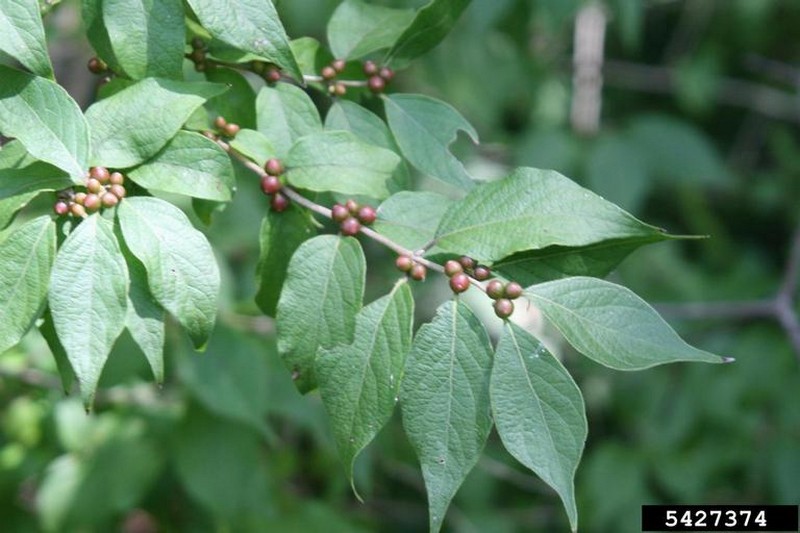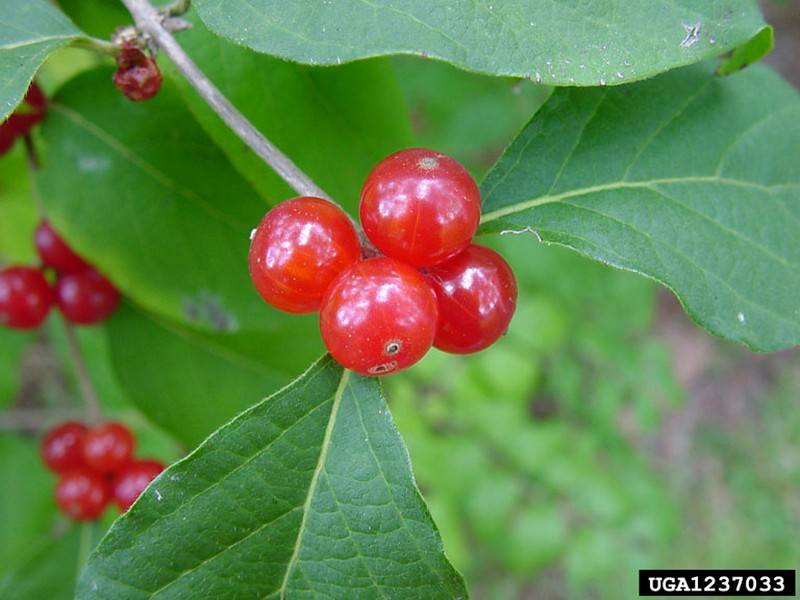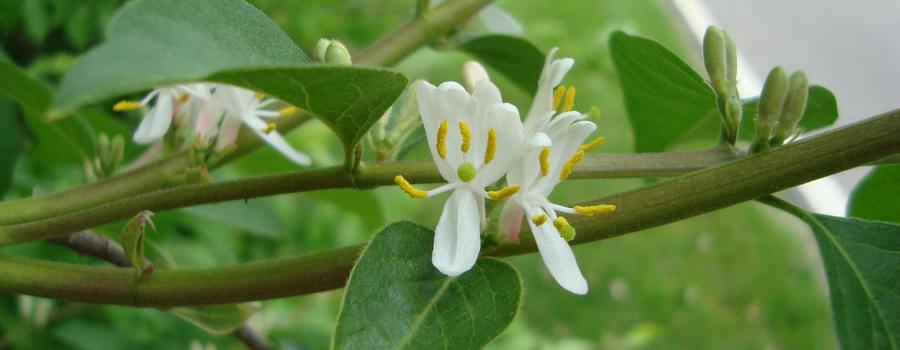photo: Annemarie Smith, ODNR Division of Forestry, Bugwood.org
Amur Honeysuckle (Lonicera maackii)
 Chris Evans, Illinois Wildlife Action Plan, Bugwood.org |
 Chuck Bargeron, University of Georgia, Bugwood.org |
 Chuck Bargeron, University of Georgia, Bugwood.org |
Form:
Dense, multi-stemmed shrubs, 6-12' tall. Older stems may have shaggy, peeling bark and are often hollow between the nodes
Leaves:
Opposite, oval or oblong, and entire. Leaves may be hairless to downy and green or blue-green.
Flowers:
Fragrant, tubular, and arranged in pairs at leaf axils. Reddish pink or white, turning yellow with age. Bloom mid- to late spring.
Fruits & Seeds:
Red, orange or yellow, in pairs at leaf axils, and containing many seeds.
Roots:
Fibrous and shallow.
Similar Species:
Native Lonicera shrubs have shorter, sparser growth forms and white pith in stems. Native Diervilla species have yellow flowers and grow in dry or rocky sites. Native species develop leaves 1-2 weeks later, drop them earlier in the fall and often have solid stems.
Tier 4 - Widespread and Abundant
These are known problem species throughout Cleveland Metroparks and are currently under active management. Management plans are set using population extent and site-specific information.
Action: These plants should be recored as present or absent. These species are known to be widespread and abundant throughout Cleveland Metroparks.





